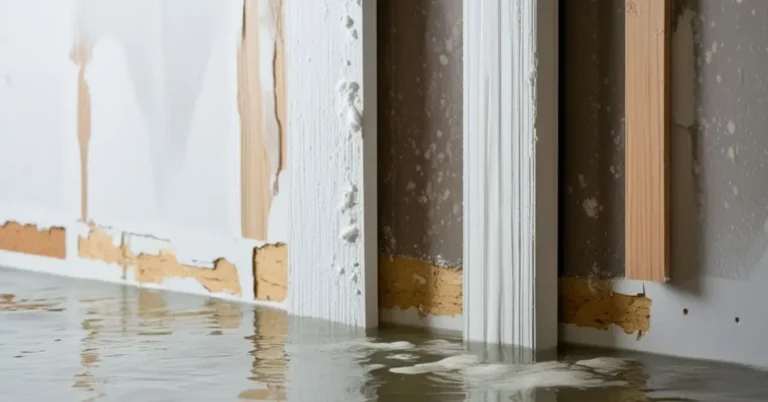Wet gypsum board, often referred to as wet drywall, can be a significant issue in construction and home maintenance. When exposed to moisture, gypsum board can suffer from structural compromise, mold growth, and reduced durability. This article delves into the causes, identification, remediation, and preventive measures for wet gypsum boards.
Understanding Wet Gypsum Board
Gypsum board, commonly used in interior walls and ceilings, consists of a gypsum core sandwiched between layers of paper. Its popularity stems from its affordability, ease of installation, and versatility. However, its vulnerability to moisture is a critical drawback. When exposed to water, the board can absorb moisture, leading to swelling, warping, and degradation of structural integrity.
Causes of Wet Gypsum Board
1. Water Intrusion
- Plumbing leaks, roof leaks, or burst pipes can saturate drywall.
- Flooding or natural disasters may also expose large areas to water.
2. Humidity and Condensation
- High indoor humidity levels or improper ventilation can cause moisture buildup, especially in basements or bathrooms.
3. Material Choice
- Standard gypsum boards are not designed for high-moisture areas, unlike moisture-resistant or mold-resistant alternatives.
Signs of Wet Gypsum Board
- Discoloration: Yellowish or brown stains on the surface.
- Swelling and Warping: Noticeable bulges or uneven surfaces.
- Mold Growth: Black or green spots indicating mold infestation.
- Softness: Loss of structural strength, making it prone to crumbling when pressed.
The Dangers of Wet Gypsum Board
1. Health Hazards
Moist environments encourage mold growth, which can cause allergies, respiratory issues, and other health concerns.
2. Structural Weakness
Prolonged exposure to moisture weakens the drywall, compromising its load-bearing capabilities.
Repairing Wet Gypsum Board
When to Salvage
- Clean Water Damage: Minor exposure from clean water sources (e.g., burst pipes) can often be dried and salvaged.
- Short Exposure Duration: If addressed quickly, drying techniques like dehumidifiers or fans can restore the board.
When to Replace
- Contaminated Water Damage: Floodwater or sewage contamination necessitates replacement for health safety.
- Mold Infestation: Severe mold growth requires removal of affected sections.
Steps to Address Wet Gypsum Board
- Stop the Water Source: Identify and fix the source of the moisture.
- Dry the Area: Use industrial fans and dehumidifiers to remove moisture.
- Inspect for Mold: Check for mold growth and address it using specialized treatments.
- Cut Out Damaged Sections: Remove severely affected areas, ensuring at least 12 inches beyond visible damage.
- Patch and Paint: Replace with new gypsum board, finish with joint compound, and paint.
Moisture-Resistant Options
Investing in moisture-resistant or mold-resistant gypsum boards can prevent future issues. Products like USG’s Mold Tough® Panels are designed for high-humidity areas, offering resistance to both moisture penetration and mold growth.
Comparison of Standard vs. Moisture-Resistant Gypsum Boards
| Feature | Standard Gypsum Board | Moisture-Resistant Gypsum Board |
|---|---|---|
| Moisture Resistance | Low | High |
| Mold Resistance | None | Enhanced |
| Durability | Moderate | High |
| Cost | Affordable | Higher upfront cost |
| Applications | General indoor use | Bathrooms, basements, kitchens |
Preventing Wet Gypsum Board Issues
- Choose the Right Material: Use moisture-resistant drywall in vulnerable areas.
- Seal Vulnerabilities: Apply water-resistant sealants around windows and doors.
- Improve Ventilation: Ensure proper airflow in bathrooms and kitchens.
- Install Gutters: Divert rainwater away from the structure.
- Conduct Regular Maintenance: Inspect and repair leaks promptly.
Relevant Resources
To better understand remediation techniques, you can check out this YouTube video on drywall repair. It provides step-by-step guidance for addressing minor water damage effectively.
Conclusion
Addressing wet gypsum board issues promptly can save homeowners from costly repairs and health hazards. By understanding the causes, recognizing early signs, and taking preventive measures, you can protect your property and ensure its longevity. For areas prone to moisture, investing in moisture-resistant solutions is a wise choice.
For further expert assistance, consult professionals to ensure effective restoration and long-term safety.

